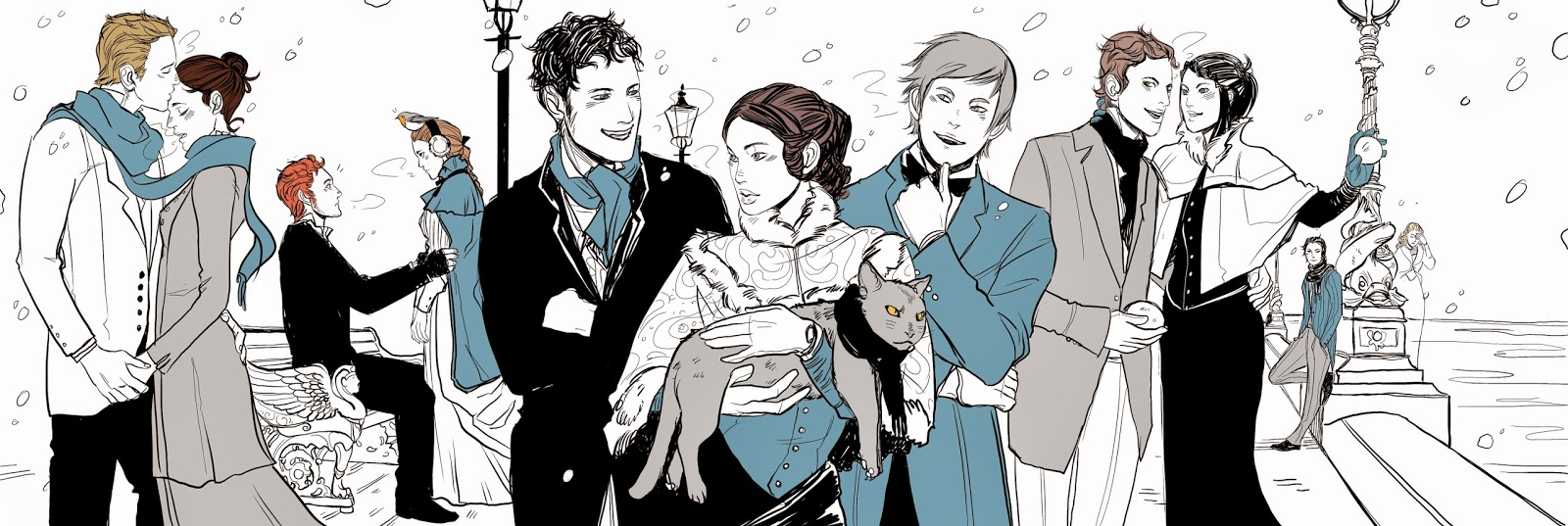Table of Contents Show
Cassandra Clare – author and creator of The Shadowhunters Chronicles – is the very embodiment of her own quote, “We live and breathe words.” (( Clare, Cassandra. Clockwork Prince. Margaret K. McElderry Books, 2011. )) An extremely well-read bibliophile, Clare often attributes her vast knowledge of classical literature to her upbringing. (( Enni, Sarah. “Cassandra Clare.” First Draft with Sarah Enni, Spotify, 23 Mar. 2020. )).
As the only child of two professors who frequently relocated internationally, Clare recalls that books were a much-needed constant in her childhood and often referenced the suitcase she was allowed to fill to the brim with any books she desired to keep her company when traveling. (( Enni, Sarah. “Cassandra Clare.” First Draft with Sarah Enni, Spotify, 23 Mar. 2020. )). To this day, Cassandra Clare continues to live a lifestyle that is filled with words. She continues to acquire her own library of rare manuscripts, collaborates regularly with a posse of writer friends, and bi-annually churns out novels that exceed seven-hundred pages.

So it’s easy for those familiar with her work to conjure a mental image of Clare as someone who is perpetually immersed in language. While other contemporary young adult authors might make a rare reference to the works of Shakespeare or Keats, Clare’s intimate knowledge of classical literature is woven into each page of her books.
Frequent epigraphs, coy allusions, and highly literate characters such as Will Herondale, who often spontaneously relate their lives to pieces of text, allow Clare to employ her vast, internalized library onto The Shadowhunter Chronicles. Notably, the influence of certain writers supersedes mere references and quotations. Charles Dickens is one; his words and stories pervade the series, particularly The Infernal Devices and the new The Last Hours trilogies. While all Shadowhunters books are urban fantasy, these two series have the added element of a historical backdrop. Set in Victorian and Edwardian London respectively, these books inhabit the world of Dickens… with the added layer of fantasy.
Taking Dickens Outside Of The Victorian Era
It would be impossible to consider Victorian era London without considering the influence of Charles Dickens. Due to his work’s accessibility and universal appeal, he is hailed frequently as the greatest and most popular writer of the era. ((Collins, Philip. “Charles Dickens.” Encyclopædia Britannica, Encyclopædia Britannica, Inc., 5 June 2020, www.britannica.com/biography/Charles-Dickens-British-novelist. )) So, naturally, even the Shadowhunters in Victorian London are well-acquainted with his work.
Although Dickens himself passed in 1870, the Victorian era spanned roughly from 1837-1901 throughout the reign of England’s Queen Victoria, so when the curtain opens on The Infernal Devices in 1878, the setting is very much within that period. ((Collins, Philip. “Charles Dickens.” Encyclopædia Britannica, Encyclopædia Britannica, Inc., 5 June 2020, www.britannica.com/biography/Charles-Dickens-British-novelist. )) (( Steinbach, Susie. “Victorian Era.” Encyclopædia Britannica, Encyclopædia Britannica, Inc., 8 Oct. 2019, www.britannica.com/event/Victorian-era. ))
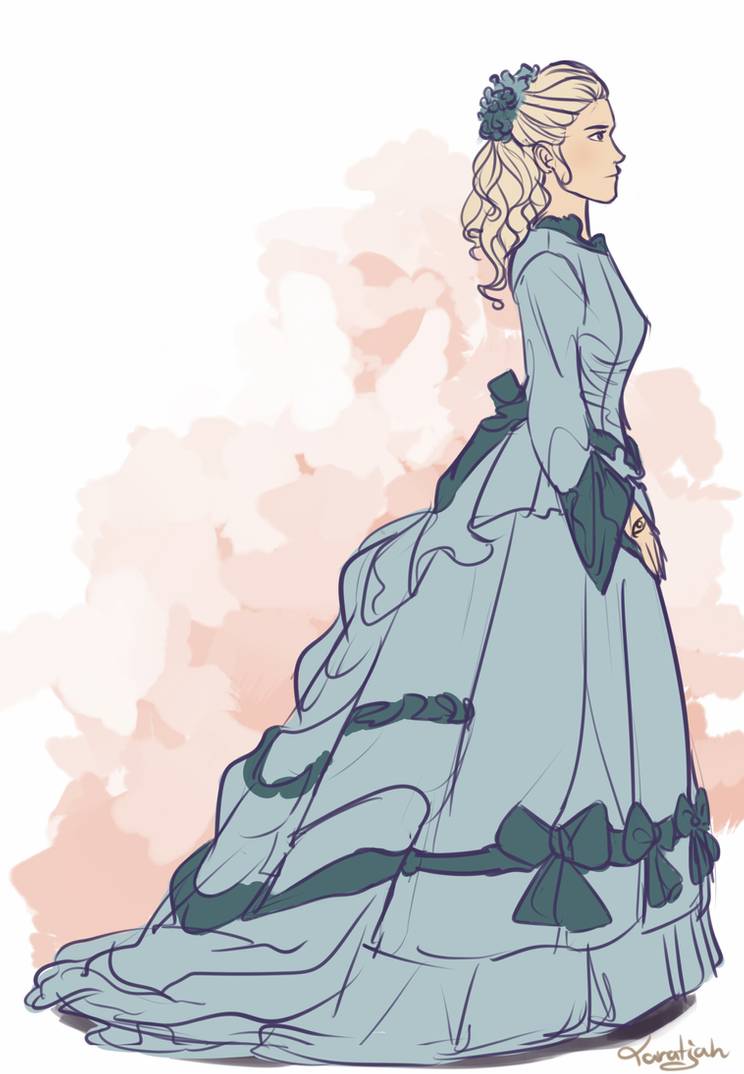
But London of The Lost Hours is not. Set a generation later in the Edwardian period, the characters themselves seem more interested in Oscar Wilde – whom Matthew Fairchild specifically idolizes in Chain of Gold and Nothing But Shadows – than Dickens. In a recent interview, Clare referenced her choice to set a Shadowhunters novel in the Edwardian era, explaining that
“‘There are a lot of books set in the Victorian era, and there are a lot of books that skip to the Great War, but the interim period is sort of often overlooked.’”
(( Jeunesse, Marilyn La. “Cassandra Clare’s ‘Chain of Gold’ Is a Lesson In Friendship and Secrecy.” Teen Vogue, Teen Vogue, 24 Mar. 2020, www.teenvogue.com/story/cassandra-clare-chain-of-gold. ))
So while the Edwardian era of The Lost Hours is highly influenced by the preceding Victorian Era, the young adult characters of the story are a generation beyond that era. Even still, in The Mortal Instruments, set in twenty-first-century America, the characters are familiar with the works of Dickens. In City of Lost Souls, Jace picks up a copy of A Tale of Two Cities – also revealed to be his ancestor Will Herondale’s copy – and begins to read it to Clary.
He remarks “‘Dickens is always promising,'” to Clary, who immediately recalls reading the book in school, and that Lucie “‘picks the boring guy.'” (( Clare, Cassandra. City of Lost Souls. Margaret K. McElderry Books, 2012. )) Opening up the novel in a contemporary setting seems almost like an invitation to draw comparisons and to analyze the story’s lasting impact on future generations. Beyond any particular era, the Shadow World is a world that has been influenced by Dickensian literature.
A Shadowhunter’s London
One of the most obvious parallels between the world of Dickens and the Shadow World is the common setting in London, England. Both Clare’s The Infernal Devices trilogy and The Last Hours trilogy are set primarily in London, and both are explicitly based upon Dickensian novels. The characters fight demons and frolic about the same streets and places that Dickens depicts so vividly in his own works.
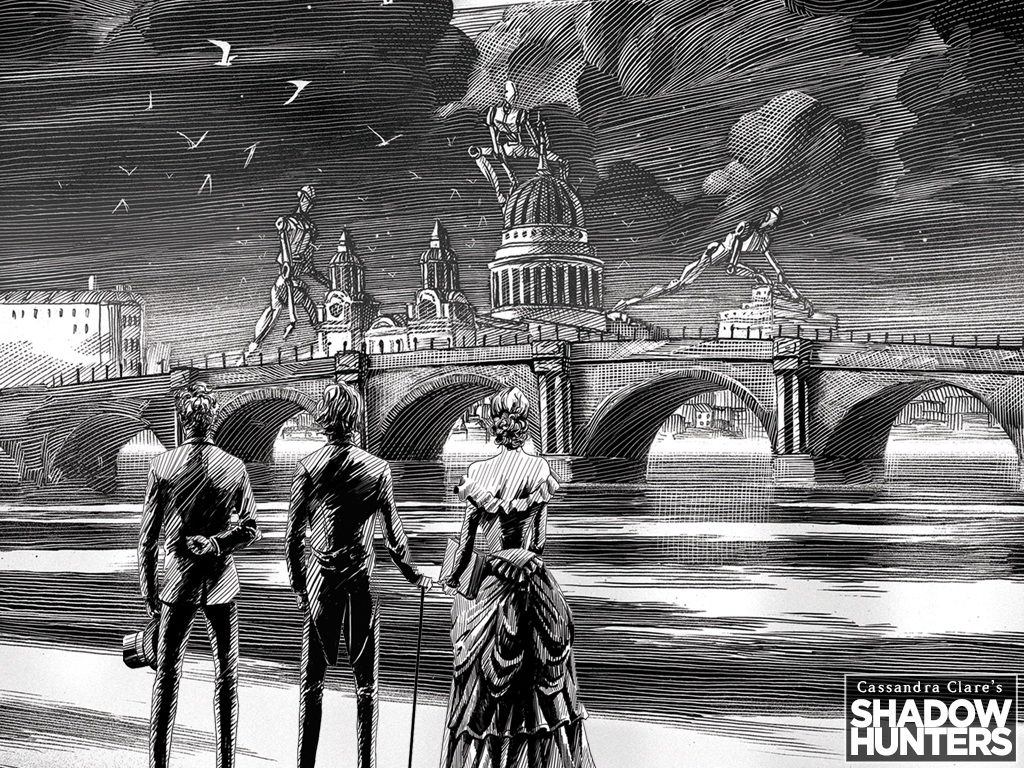
Adorably, Shadowhunters novels often note that the Enclave’s annual Christmas party occurs at the London Institute. This could be a nod to Dickens, who is closely associated with the holiday. Famously, Dickens penned the story A Christmas Carol in London and contributed a great deal to the folklore and the spirit of the holiday that remains today. ((Collins, Philip. “Charles Dickens.” Encyclopædia Britannica, Encyclopædia Britannica, Inc., 5 June 2020, www.britannica.com/biography/Charles-Dickens-British-novelist. ))(( Rowell, Geoffrey. “Dickens and the Construction of Christmas.” HistoryToday, vol. 43, no. 12, Dec. 1993, www.historytoday.com/archive/dickens-and-construction-christmas. ))
Within the city of London, Blackfriars Bridge is a recurring structure in Dickens novels, such as when Pip rows in the river Thames in Great Expectations. (( Dickens, Charles. Great Expectations. Oxford University Press, 1998. )) The bridge also became an iconic Shadowhunters landmark due to its significance to Tessa Gray and Jem Carstairs in Clockwork Princess, and due to the fact that Clare conceived the idea for The Infernal Devices while walking across the bridge. (( Cicurel, Deborah. “Cassandra Clare Talks to Glamour about City of Heavenly Fire.” Glamour UK, Glamour UK, 4 Oct. 2017. ))
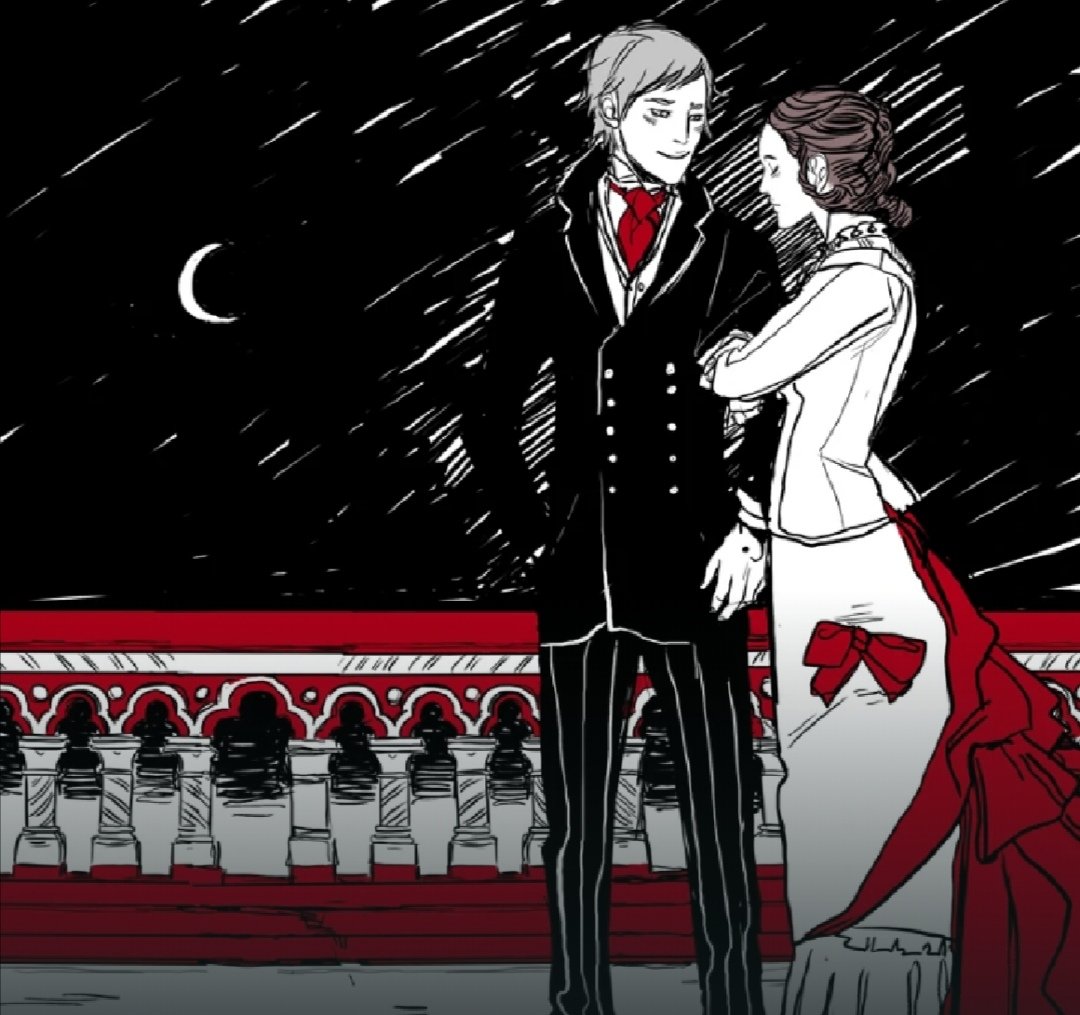
She remarks that she envisioned “two people, a girl and a boy in Victorian dress standing at the edge of the bridge.” (( Jeunesse, Marilyn La. “Cassandra Clare’s ‘Chain of Gold’ Is a Lesson In Friendship and Secrecy.” Teen Vogue, Teen Vogue, 24 Mar. 2020, www.teenvogue.com/story/cassandra-clare-chain-of-gold. )) The bridge seems to overall symbolize a tie to the past and to the Victorian era that reappears throughout all of the Shadowhunters novels, as Tessa and Jem annually reconvene on the bridge through the ages.
The Two Cities Convention
Clare acknowledges that The Infernal Devices trilogy is “very loosely” based on Dickens’ A Tale of Two Cities, which depicts the cities of London and Paris in the late eighteenth-century. (( “Cassie Clare Talks Clockwork Angel & A Tale of Two Cities.” Novel Novice, 17 Aug. 2010, novelnovice.com/2010/08/17/cassie-clare-talks-clockwork-angel-a-tale-of-two-cities/. )) However, where A Tale of Two Cities compares London to another real-life setting, Clare juxtaposes mundane London to the mysterious Downworld London filled with demonic magic and fantastical creatures. (( “Cassie Clare Talks Clockwork Angel & A Tale of Two Cities.” Novel Novice, 17 Aug. 2010, novelnovice.com/2010/08/17/cassie-clare-talks-clockwork-angel-a-tale-of-two-cities/. ))
Although this convention is perhaps most apparent in The Infernal Devices, one might make the case that Clare’s Shadowhunters books are urban fantasy, and therefore intrinsically set up this juxtaposition. This occurs most frequently in Clare’s stories that center around characters such as Clary Fairchild and Tessa Gray, who are new to the Shadow World and experience an alternate version of their respective cities for the first time.
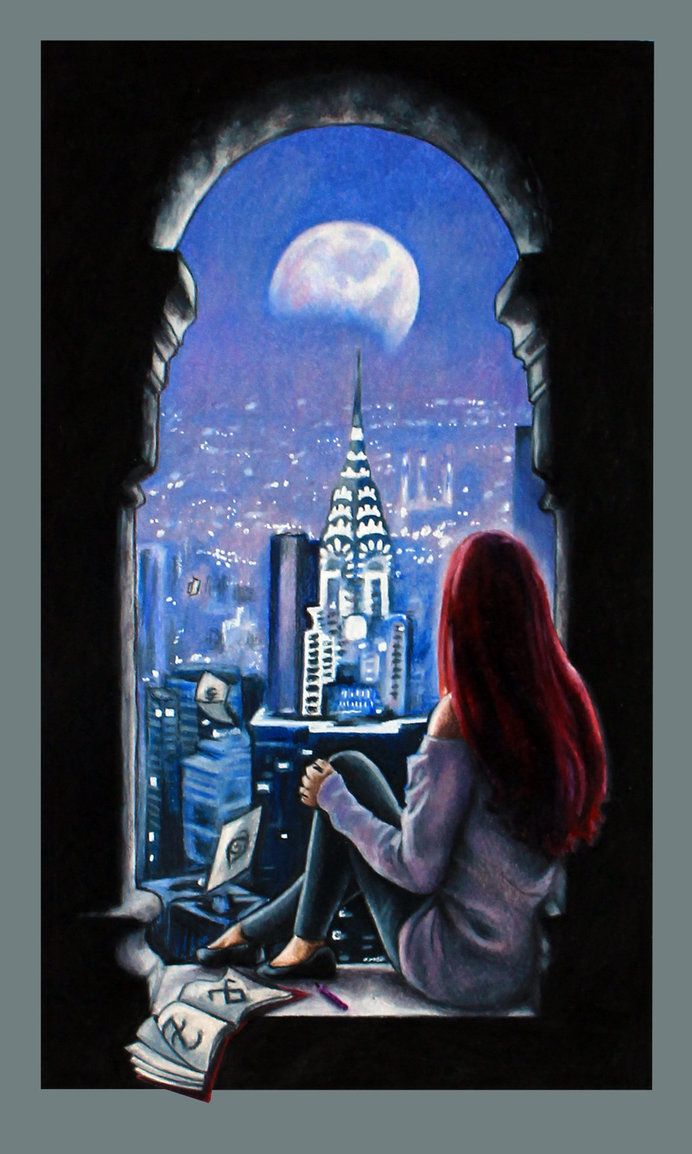
There also are recurring jokes and references to the friction between mundane culture and Shadowhunter culture, which is at times more progressive and at times far regressive. Anna Lightwood’s openness about her queer identity and Charlotte Branwell’s leadership position in Chain of Gold notably push the boundaries of Victorian-era gender roles by mundane standards. (( Jeunesse, Marilyn La. “Cassandra Clare’s ‘Chain of Gold’ Is a Lesson In Friendship and Secrecy.” Teen Vogue, Teen Vogue, 24 Mar. 2020, www.teenvogue.com/story/cassandra-clare-chain-of-gold. )) (( Clare, Cassandra. Chain of Gold. Margaret K. McElderry Books, 2020. ))
Contrastingly, the Shadowhunters of near-present-day Los Angeles in The Dark Artifices can barely use a computer, and as of The Lost Book of White, the Lightwoods don’t even know what it means to Google something. (( Clare, Cassandra. Lady Midnight. Margaret K. Elderberry Books, 2019. )) ((Clare, Cassandra, and Wesley Chu. The Lost Book of the White. Simon & Schuster, 2020. )) The societal juxtaposition of Clare’s work allows for the same sort of commentary that Dickens’ Londonite characters make upon arrival in poorer pre-revolution Paris for the first time in A Tale of Two Cities.
Secrets, Young Love, Uprisings And Thematic Inspiration
Perhaps the most widespread influence of Dickens’ stories upon the Shadowhunters novels is thematic similarities and inspiration. Where Dickens novels are often filled with unrequited love stories, redemption, bubbling social conflict, and mysterious pasts, The Shadowhunters Chronicles certainly follows suit.
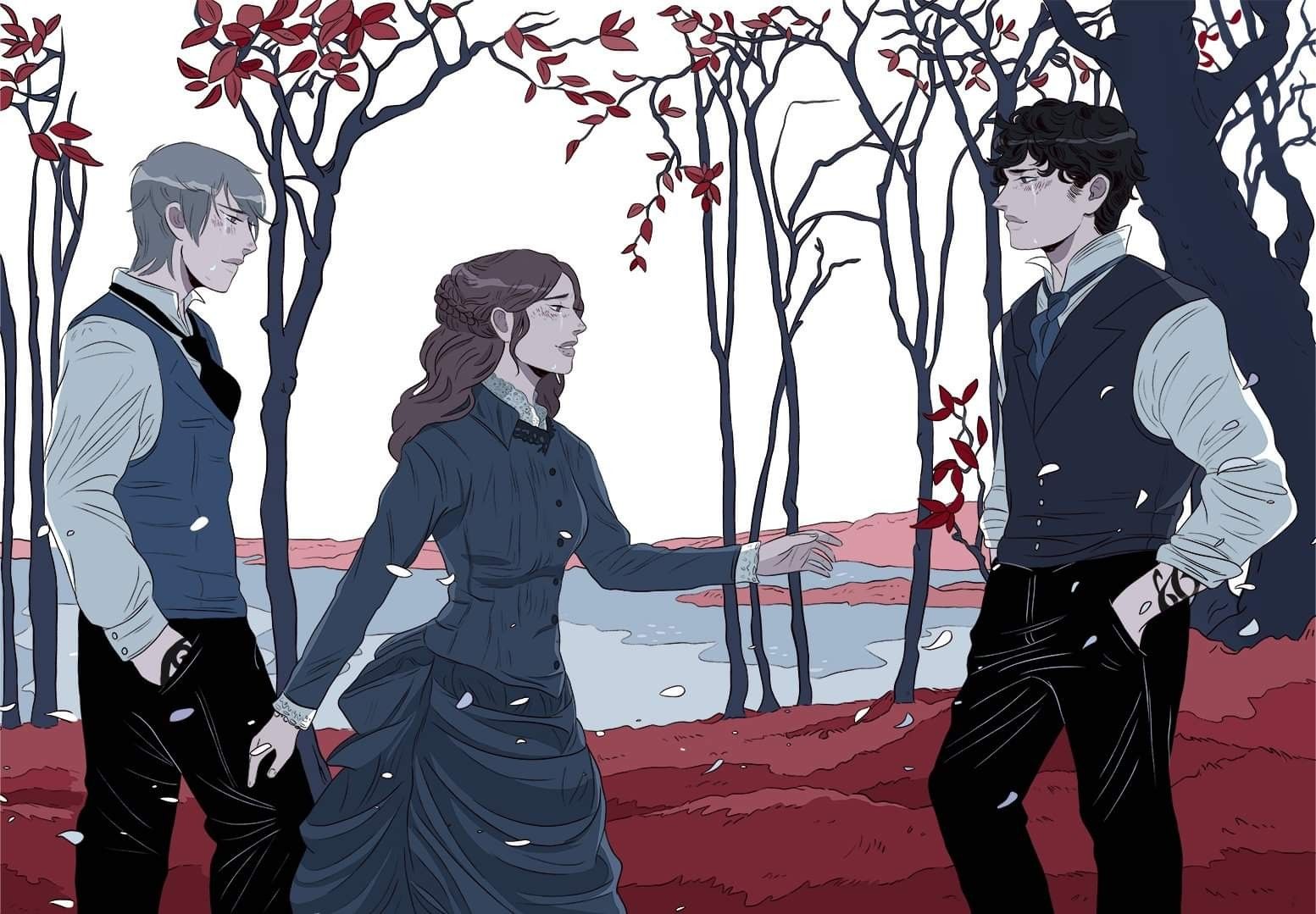
Just like in A Tale of Two Cities, Clare has stated that her works often question whether love can redeem a person from their fall past. (( “Cassie Clare Talks Clockwork Angel & A Tale of Two Cities.” Novel Novice, 17 Aug. 2010, novelnovice.com/2010/08/17/cassie-clare-talks-clockwork-angel-a-tale-of-two-cities/. )) There is certainly a question at play in the stories of… well, all of the Herondale boys, at least. Each brooding over their own dark pasts and identity, they engage in self-loathing and question whether they will ever be deserving of love.
A Tale of Two Cities depicts French society on the edge of its tumultuous rebellion and Great Expectations deals with class conflict. (( Dickens, Charles. A Tale of Two Cities. Barnes & Noble Classics, 2009. )) (( Dickens, Charles. Great Expectations. Oxford University Press, 1998. )) The Shadowhunters Chronicles deal with similar themes of social clash and progressivity through the Clave’s politics and the divides between Downworlders and Shadowhunters.
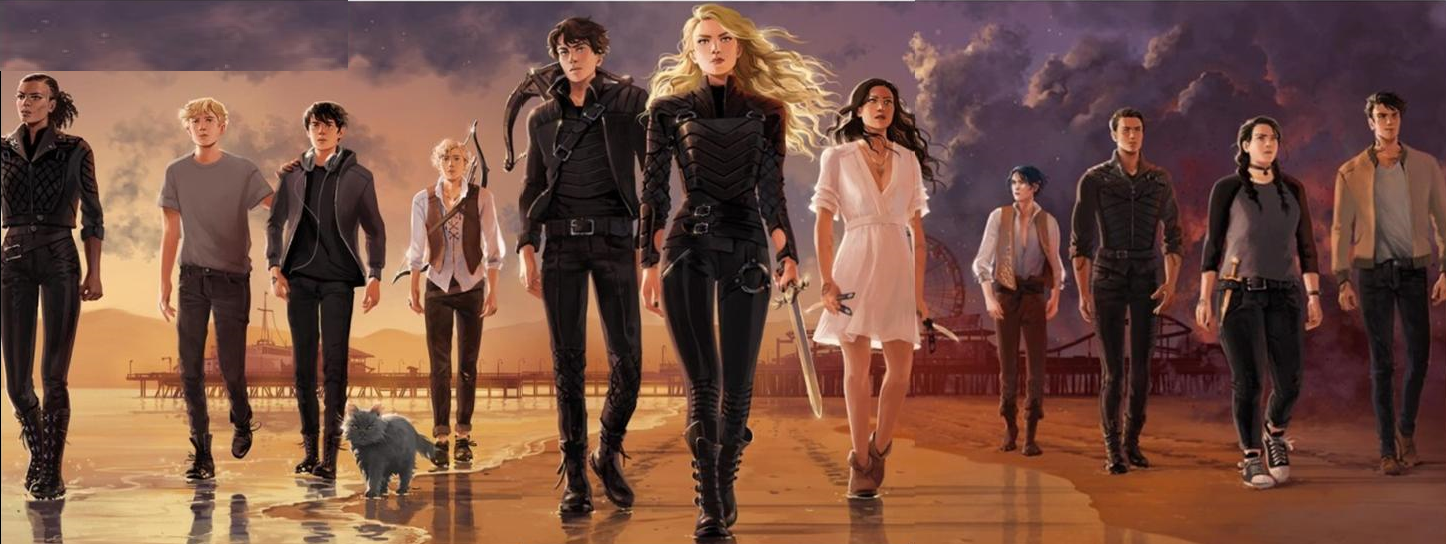
At various stages in The Shadowhunters Chronicles, the younger cast of characters fight against the adult Clave’s policies and biases that discriminate against Downworlders. This is evident in the Clave’s dislike for Tessa Gray’s warlock blood, the Blackthorn’s fairy blood, and pretty much all things Downworlder. (( Clare, Cassandra. Clockwork Prince. Margaret K. McElderry Books, 2011. )) (( Clare, Cassandra. Lady Midnight. Margaret K. Elderberry Books, 2019. ))
The characters often deal with a conflict with the state of the Shadow world and the way things should be in a just and perfect world. The Clave’s motto, “Sed lex dura lex. ‘The Law is hard, but it is the Law'” aptly sets up this conflict throughout the series. (( Clare, Cassandra. City of Bones. Margaret K. Elderberry Books, 2008. )) The younger characters in each Shadowhunters series conspire against the ruling body of the Clave, prompting them to question the law.
Recurring Characters
While fans occasionally ask about the books-behind-the-books on Cassandra Clare’s blog, it seems that certain distinctly Dickensian characters blend right into Clare’s fictional universe. One example of this would be Clare’s inspiration in A Tale of Two Cities characters Syndey Carlton and Charles Darnay. (( “Cassie Clare Talks Clockwork Angel & A Tale of Two Cities.” Novel Novice, 17 Aug. 2010, novelnovice.com/2010/08/17/cassie-clare-talks-clockwork-angel-a-tale-of-two-cities/. )) (( Dickens, Charles. A Tale of Two Cities. Barnes & Noble Classics, 2009. )) These two men, identical in appearance, represent, in Clare’s words, “opposite poles on the Victorian scale of virtuousness. (( “Cassie Clare Talks Clockwork Angel & A Tale of Two Cities.” Novel Novice, 17 Aug. 2010, novelnovice.com/2010/08/17/cassie-clare-talks-clockwork-angel-a-tale-of-two-cities/. ))
Similarly, Clare made her own leading men, Jem and Will, foils. Jem and Will, though opposite in temperament and appearance, are parabatai in the world of Shadowhunters and are thus paired with the likes of Carlton and Darnay. (( “Cassie Clare Talks Clockwork Angel & A Tale of Two Cities.” Novel Novice, 17 Aug. 2010, novelnovice.com/2010/08/17/cassie-clare-talks-clockwork-angel-a-tale-of-two-cities/. )) The existence of a love triangle with characters who so closely mirror Dickensian characters might lead one to think that Clare would intend to allow the story to play out similarly, however, the plot’s diversion from Dickens’ story makes the conclusion of Clockwork Princess unexpected and fresh.
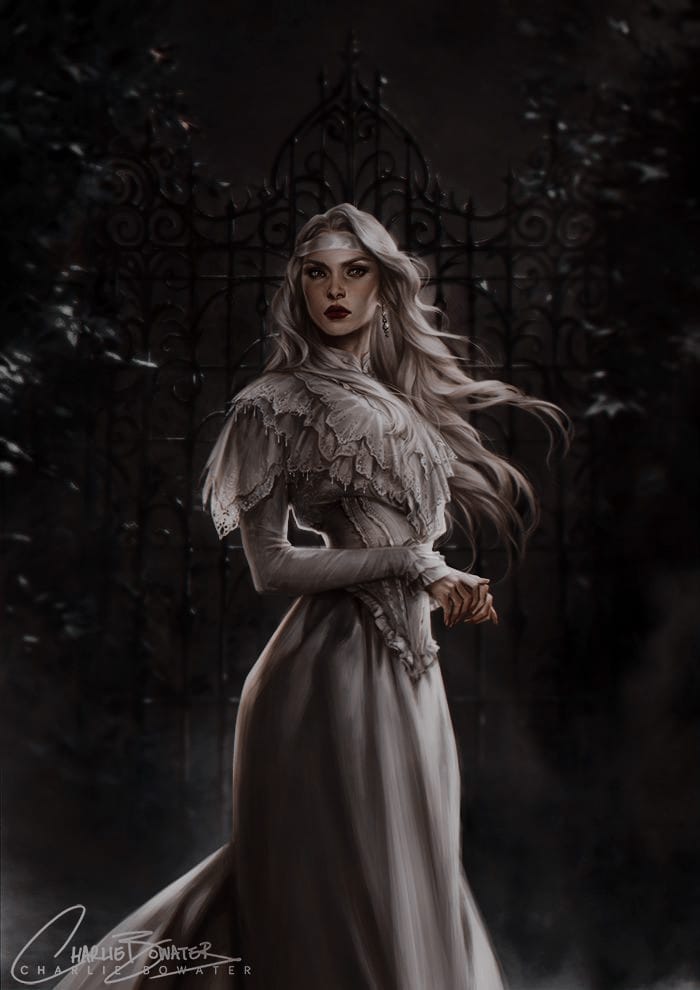
Another explicit character comparison in Clare’s work is that between Tatiana Blackthorn and her adoptive daughter Grace Blackthorn, who are, respectively, based upon Miss Havisham and Estella of Great Expectations. ((Clare, Cassandra. Chain of Gold. Margaret K. McElderry Books, 2020. )) Similar to Havisham, Tatiana has experienced a devastating loss that drives her into a life of madness, couped up in an old mansion. ((Dickens, Charles. Great Expectations. Oxford University Press, 1998. )) (( Clare, Cassandra. Chain of Gold. Margaret K. McElderry Books, 2020. )) And similar to Estella, Grace earns the undying affection of the story’s romantic male lead.
She is characterized as fragile and doll-like, a victim of her mother’s insanity. (( Clare, Cassandra. Chain of Gold. Margaret K. McElderry Books, 2020. )) In Chain of Gold, James Herondale is bewitched by Grace Blackthorn’s beauty, unattainability… and the enchanted bracelet that compels him to love her. ((Dickens, Charles. Great Expectations. Oxford University Press, 1998. )) Whereas in Great Expectations, Pip’s obsession with Estella is clearly motivated by financial aspiration, James Herondale’s situation is one forced upon him by dark magic which may have implications for the future of Chain of Gold. ((Dickens, Charles. Great Expectations. Oxford University Press, 1998. )) (( Clare, Cassandra. Chain of Gold. Margaret K. McElderry Books, 2020. ))
The Future Of The Shadowhunters Chronicles
Hilariously, the term “Chronicles” itself is a sort of Dickensian reference. Charles Dickens began writing for a publication entitled The Morning Chronicle and published his work serially. ((Collins, Philip. “Charles Dickens.” Encyclopædia Britannica, Encyclopædia Britannica, Inc., 5 June 2020, www.britannica.com/biography/Charles-Dickens-British-novelist. )) Although Clare’s series is published as complete novels and novellas, the ongoing nature of the series sort of mirrors Dickens’ own writing process.
As for the future of The Last Hours and the world of The Shadowhunters Chronicles, Clare remains adamant that one cannot predict the plot of her novels by comparing them to their Dickensian source material. (( Enni, Sarah. “Cassandra Clare.” First Draft with Sarah Enni, Spotify, 23 Mar. 2020. )) (( Clare, Cassandra. “Tellings and Retellings.” Cassandra Clare, 23 Sept. 2015. )) However, analyzing the similarities and themes could act as starting points for any fan interested in crockpot theories and predictions.
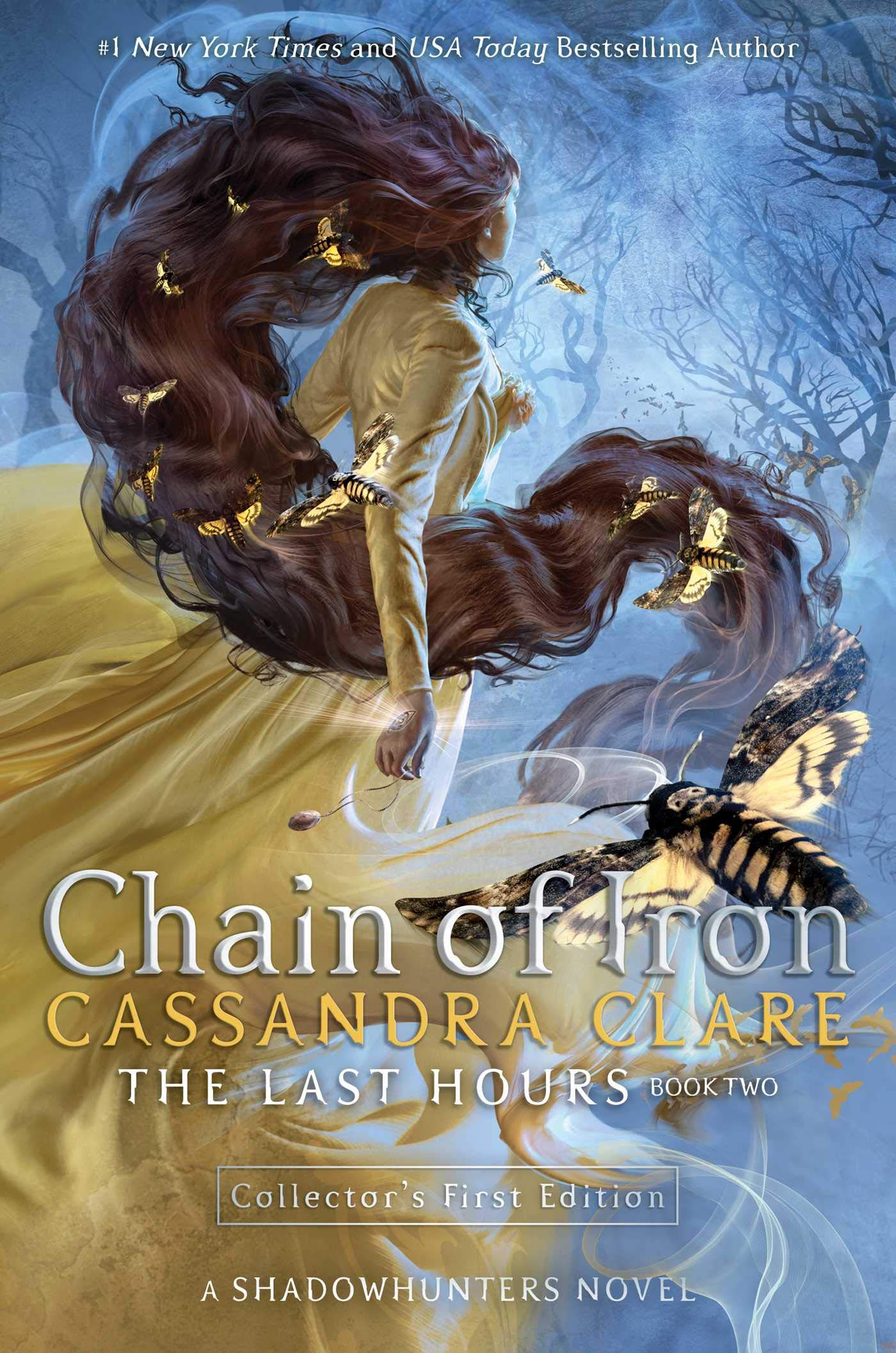
The title of The Last Hours is actually based upon a Great Expectations quote that Pip says to Estella. “Estella, to the last hour of my life, you cannot choose but remain part of my character, part of the little good in me, part of the evil.” ((Dickens, Charles. Great Expectations. Oxford University Press, 1998. )) If Grace and James are the Shadowhunter equivalents to Estella and Pip, this could be a hint that to the last hours of James’ life he stays loyal to Grace’s spell. Or it could not be…
Historically, Clare has equivocally leaned into plot-based parallels, adapted them, and utterly rejected them in previous Shadowhunters novels. As she noted on a recent blog post, “A retelling is called a transformative work for a reason: if the goal of retelling Great Expectations was to retell it with exactly no changes to the relationships, then why bother?” (( Clare, Cassandra. “Tellings and Retellings.” Cassandra Clare, 23 Sept. 2015. ))
